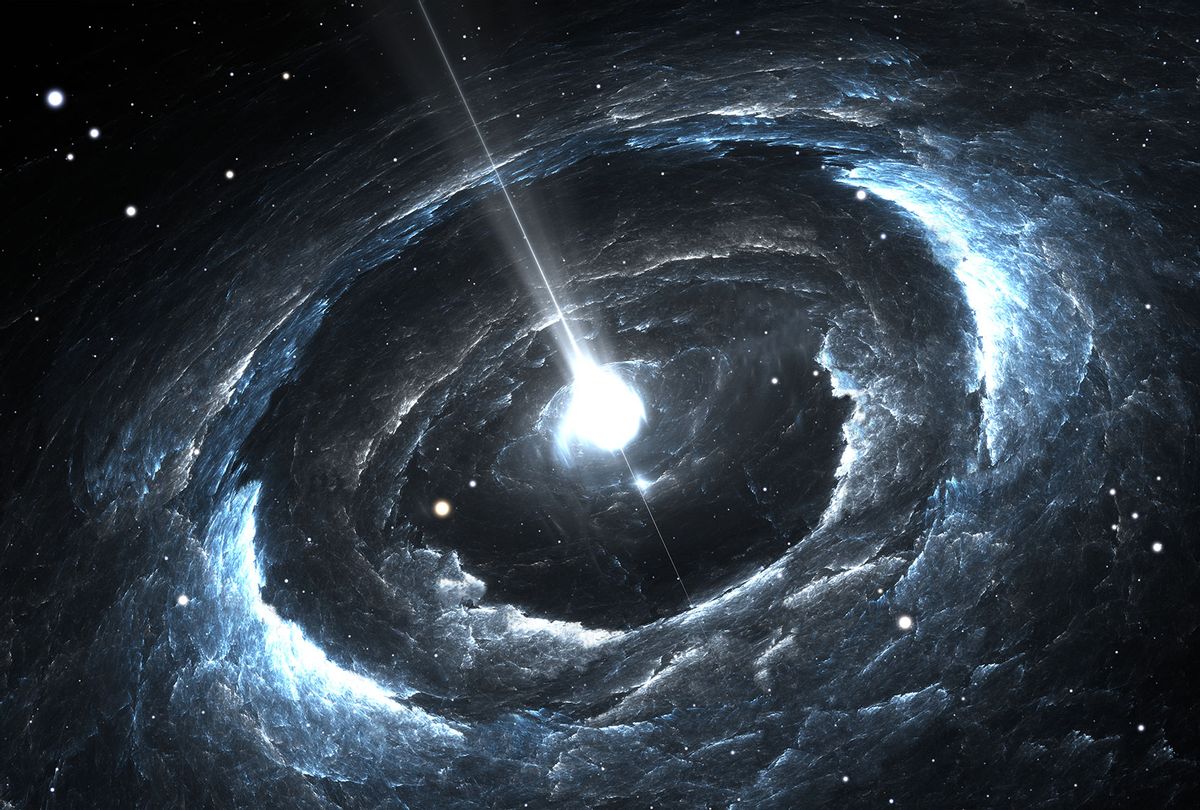Imagine that a massive star, one far bigger than our own sun, has died. First there is a spectacular explosion, followed by whatever remains. Sometimes it is a black hole, which can be fascinating in its own right, and on other occasions we are left with a super-dense collapsed core of the formerly magnificent star. Those objects are known as neutron stars — and scientists believe they may have just figured out a way to learn more about these extremely weird, distant bodies.
To do that, though, they examined something very, very small: The nucleus of atoms, or the smallest unit of ordinary matter that can form a chemical element. Like the solar system itself, atoms contain a massive center with smaller objects rotating around it. In the case of our solar system, the center is the sun and the smaller objects are various planets and other celestial bodies. In the case of an atom, the center is a nucleus composed of parts known as protons and neutrons, which are in turn surrounded by rotating electrons.
"If you go back to when we first started looking at [atomic] nuclei, we used electrons to map out the size of the nucleus," Dr. Kent Paschke, a professor of experimental nuclear and particle physics at the University of Virginia and co-author of the new study, told Salon. "We sort of made a new picture of the nucleus to explain not just where the protons are, but where all the matter in the nucleus is. What we've learned is the average density inside the lead nucleus. What that tells us is a detail about nuclear structure that we never had before, which is how hard it is to create dense, neutron rich matter."
How does this relate to neutron stars? Simply put, this new information could help us learn more about their size and physical properties.
"Fundamentally the physics is the same," Paschke explained. "The kinds of interactions are the same. We think we can translate from the situation inside the tiny nucleus to the situation inside the star. And that's something physicists like to do; they like to have a general rule that applies to a lot of different systems."
He added that what they have learned, specifically, is "the thickness of the neutron skin of the lead nucleus. And so it's a different system than a neutron star. And we're talking about where the neutrons are in the lead nucleus, and then the implications for the total size of the neutron star."
It is important to note that neutron stars are unlike anything we can imagine here on Earth. According to Dr. Jorge Piekarewicz, a physicist at Florida State University who co-authored a companion study to the neutron star research, they originate from stars very different from our sun. Stars like our sun create energy through thermonuclear reactions and, when they die, become "white dwarf" stars. A neutron star, by contrast, is created when a star much, much larger than the sun dies out.
"As the name indicates, neutron stars are made mostly of neutrons, unlike our sun which is largely made of primordial hydrogen created during the Big Bang," Piekarewicz told Salon by email. "Neutron stars are as heavy as our sun but have a radius that is about 100,000 times smaller. As such, they are the densest objects in the universe. A sugar cube of neutron star material weighs as much as the entire population of the world."
Piekarewicz added that neutron stars are unusual — to those of us on Earth, that is — because they contain materials which cannot be made on our planet, have magnetic fields that are exponentially stronger than our planet's magnetic field and are also exponentially denser than water.
"The study is remarkable because it connects objects as small as the atomic nucleus (with sizes of a few femtometers) with astronomical objects as large as a neutron star (with dimensions of about 10 kilometers)," Piekarewicz explained. "The study suggests that neutron stars are larger than anticipated, a fact that is fully consistent with recent observations by the NICER mission onboard the International Space Station. Thus, the study establishes a compelling link between terrestrial experiments and astronomical observations — a partnership that will become even stronger in the new era of gravitational-wave astronomy."



Shares